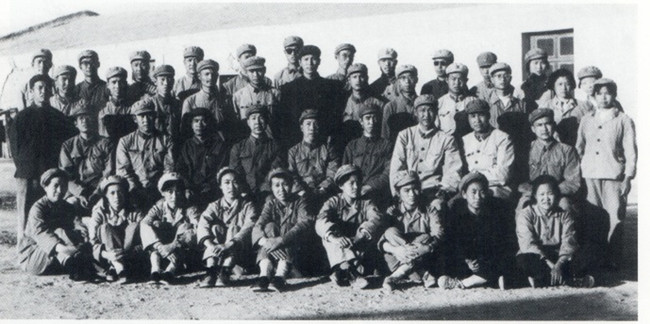Research on Radiation Biology
To promote China's research and development of nuclear bombs and missiles, and to meet the national need for the peaceful use of atomic energy, the CAS Institute of Biophysics conducted academic studies of the long-term and medium-term effects of atomic tests on animals, as well as background radioactivity surveys, from the 1950s to 1970. Its findings created reliable and scientific references for the country to learn more about the dangers of nuclear explosions to human beings and animals, take protective measures to mitigate such threats, and formulate safety standards for radiation. The institute was conferred with the National Science Conference Award in 1978 and First-class Merit Citation at the CAS Science and Technology Advancement Award Conference in 1988 for its two research programs respectively.

Cheng Longsheng (first from right in the front row) and Guo Shengwu (seventh from right in the third row) attended the third atomic test in Luobupo, northwest China's Xinjiang Uygur Autonomous Region, in May 1966. [Photo/ibp.cas.cn]

A photo taken in 1976 shows that members of No. 21 mission group from the CAS Institute of Biophysics took part in experimental work at the site of the nuclear explosion. From left to right in the front are Dai Jun, Lu Yuhai, Teng Songshan, and Dang Liankai, while from left to right at the back are Jia Xianli, Xu Guorui, Shen Xun, Liu Chengxiang, and Li Xibin. It was the sixth time that they participated in such experimental work. [Photo/ibp.cas.cn]


